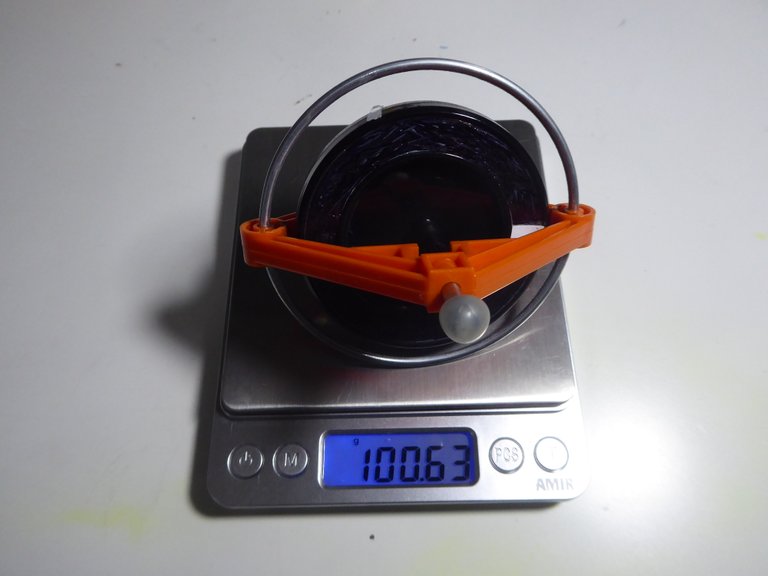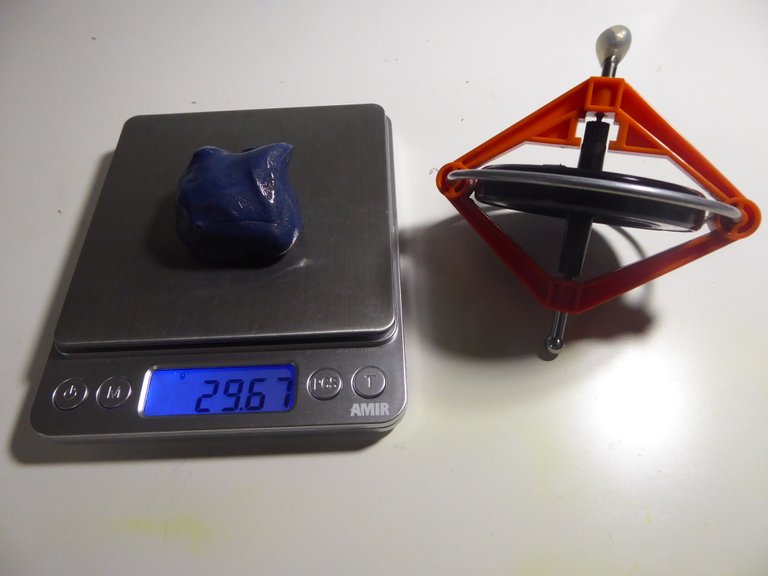🔬#MESExperiments 21: Added Weight Can Make a Gyroscope Rise Faster
In #MESExperiments 21 I go over a discovery I made early last year which flipped my already flipped understanding of gyroscopes, and that is adding extra weight to a gyroscope can make it rise faster. In some cases, this experiment being one of them, the rate of rising can be significantly faster. This video compares the rising rate of a 100.63 gram toy gyroscope with and without an extra 29.67 g putty weight. Initially both gyros start off at about 48° and somehow the weight added gyro rises about 2.71 times faster; 14 seconds vs. 38 seconds. Gyros rising on their own are amazing enough, but the ability for some gyroscopes (not all as future experiments will show) to rise much faster with relatively heavy weight added quite literally flies in the face of the conventional view of gravity.
Shouldn't gravity make things go down not up?! 😉😉

Weight Measurements and Unedited Videos Reference
The original unedited experiments are shown in the links below:
- No weight added test: https://youtu.be/GUFSjbiLFw4
- Weight added test: https://youtu.be/agBSVjmE-nM
The toy gyroscope weighs 100.63 g and the added putty weight weighs 29.67 g.
Experiment Results
The full experiment results are tabulated and graphed below from the following downloadable Excel spreadsheet.
https://1drv.ms/x/s!As32ynv0LoaIiIABWXEs3MkzjWHwdQ?e=lnAOXe
Retrieved: 15 January 2020
Archive: Not Available
Although the weight added gyro rose much faster, it also had a much shorter “sleep” period and also fell down much sooner too. Interestingly, the unweighted gyro took about 2.7 times the time to rise as well as 2.7 times the overall time before fall than that of the weighted gyro. This raises some possible relationship between rising rate and overall balancing time.

I also included a table of the angle and elapsed time for the two experiments, and for purposes of graphing I have set the angle from vertical when the gyros fall down to be equal to 90°.

The chart below includes just the period until the risen position. Notice the steepness of the rising gyro test.

The chart below shows includes the sleep period as well. Notice the unweighted gyro test appears to be a literal horizontally stretched copy of the weighted gyro test.

The chart below also includes the fallen period, and which is denoted by the 90° angle. Similarly, the unweighted chart also looks like a horizontally stretched copy of the weighted gyro test. Note that the weighted gyro has significantly more “rotational inertia” from the non-spinning extra mass which effectively throws the gyro off the support resulting in a shorter sleep and overall shorter balancing period.

Full Sequence of Events
The full sequence of events of the experiments are listed below via screenshots of the experiment video.











Stay Tuned for #MESExperiments 22…
Watch Video On:
- 3Speak: https://3speak.tv/watch?v=mes/okwhbnpe
- Odysee: https://odysee.com/@mes:8/mesexperiments-21-added-weight-can-make:9
- BitChute: https://www.bitchute.com/video/HvCOVv4hPPCq/
- Rumble: https://rumble.com/v1v89z0-mesexperiments-21-added-weight-can-make-a-gyroscope-rise-faster.html
- DTube: https://d.tube/#!/v/mes/vyl5p29209w
- YouTube: https://youtu.be/KdHw11Fmf3c
View More Amazing Videos:
- #MESExperiments Video Series: https://peakd.com/experiments/@mes/list
- DRAFT #MESExperiments Video Series: https://mes.fm/experiments-draft
- #MESScience Video Series: https://peakd.com/science/@mes/tutorials
- #AntiGravity Video Series: https://peakd.com/antigravity/@mes/series
- #FreeEnergy Video Series: https://mes.fm/freeenergy-playlist

